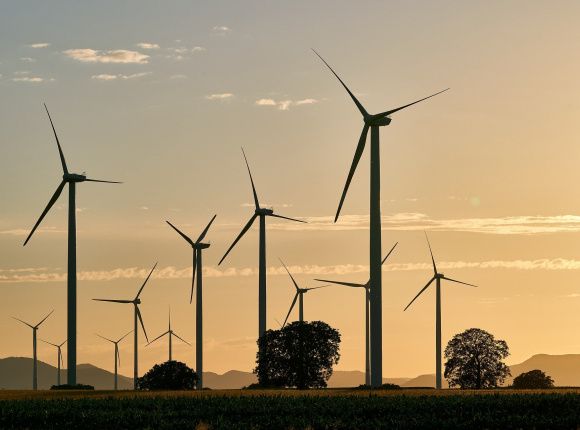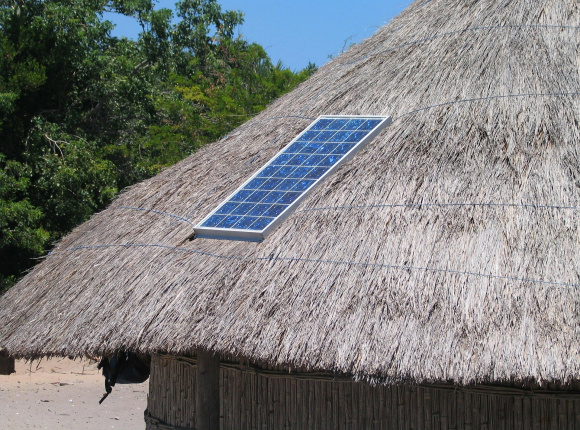Introduction
The United Nations Sustainable Development Goals targets for 2030 have been integrated into official policy by over 85 governments around the world. The amount of new, non-hydro, renewable power capacity added in 2020 was the highest ever with developing countries leading the charge. Despite the COVID-19 pandemic, this positive trend is set to continue in sub-Saharan Africa (SSA) as costs continue to fall, regional cooperation efforts intensify (think AREI and the Africa Clean Energy Corridor as well as AfCTA), and governments improve the enabling environment for utility-scale renewables and internalise international good practice.
The signs on the ground are encouraging. Under a new integrated resource plan published by the government in December 2020, the Botswanan government has approved the construction of 1.5 GW of new capacity by 2040, starting with 135 MW of PV capacity by 2022. In South Africa, the latest version of the country’s Integrated Resource Plan places significant emphasis on renewable energy from wind and solar PV technologies while in June, the president announced a hundredfold increase of the embedded generation licencing threshold. Ghana has made enormous strides in institutionalising the Cash Waterfall Mechanism and Energy Sector Recovery Levy (Delta Fund), which combine to significantly enhance the bankability of the PPAs between ECG, the state-owned electricity company, and IPPs.
The demonstration effects of projects brought successfully to operation by developers already active in the region will attract new entrants used to operating in more mature markets. Yet SSA presents a unique set of challenges to developers and investors alike. What follows is a brief discussion of three key areas in which we believe the differences between SSA and other markets are more pronounced, along with the associated challenges and risks that threaten to prevent renewables projects in SSA from achieving full bankability. We acknowledge, of course, that there are huge differences within SSA and we do not want to create the impression that Africa is a homogenous grouping of countries. Each country is different but there are some common themes worth highlighting.
Bankability begins (but doesn’t always end) with a PPA
As in other markets, the first step towards bankability is the Power Purchase Agreement (PPA) negotiated with the offtaker (in most cases, the state-ownedelectricity company). It goes without saying that a PPA that can offer an attractive tariff and security in its other terms and conditions will likely increase the odds of a bankable project, but a PPA that is not considered “investment friendly” will make it a lot harder to achieve financial close.
Unlike other markets, the PPA presented to project sponsors in the SSA context is not always a perfect document and the negotiations themselves are not always an iterative process that gives both parties a better understanding of the transaction they are entering into. Tariffs are usually fixed for the duration of the agreement and offtakers are reluctant to entertain the possibility of an escalation over time. Clauses may be ambiguous and crucial terms such as “curtailment” or “deemed energy” may be inadequately defined or borrowed wholesale from conventional power agreements without being properly adapted to a renewables context.
It is important to realise that this does not necessarily mean that the counterparties in PPA negotiations are unfamiliar with best practice or that their understanding of the essential characteristics of renewable energy project development is poor. Instead, in most cases, their ability to go “off script” and negotiate terms that differ substantially from the template agreement is limited. As such, it is important for developers and investors to place the PPA in context and to focus more on the intention of the agreement than the precise wording. “Is the agreement good enough to achieve bankability?” should be the question asked instead of getting bogged down in the legal minutiae.
Of course, legal due diligence is important but in examining the context, developers and investors should also undertake extensive research into factors affecting medium-term supply and demand of electricity, the financial position and payment behaviour of the offtaker, the nature and extent of payment guarantees and revenue distribution mechanisms, and the historical treatment of IPPs vis-à-vis other generators in the system. Interviews with existing IPPs and relevant industry associations, letters of support and press releases from regulators and line ministries, and online articles are all useful in strengthening the narrative and painting a positive picture around the PPA if required. This should be an ongoing process and should not be left to the final weeks before credit approval.
Investors will usually demand the inclusion of additional securities and contingencies in the financial model such as enhanced DSRAs, equity reserves, and dividend lock ups to compensate for the increased liquidity risk of a deficient PPA. While some enhanced internal liquidity facilities may be necessary, a range of external instruments are now available to developers in SSA that address short-term liquidity risk, including the African Trade Insurance Agency’s (ATI) Regional Liquidity Support Facility (RLSF). Partial risk guarantees, liquidity guarantees, and options provided or backed by DFIs can also be used for this purpose.
Don’t pay lip service to community engagement
Solar and wind projects often depend on the purchase or lease of land from local communities. The success or failure of such projects turn on the establishment and maintenance of meaningful relationships with affected communities built on transparency, trust, and ongoing consultation and participation during the development process. The 60 MW Kinangop Wind Park in Nyandarua County, Kenya, is a famous case in point. A range of (sometimes violent) disputes with the local community from the outset eventually led to the cancellation of the project in 2016 and the institutional investor, a well-known DFI, writing off its 19 percent stake in the venture in 2019.
It goes without saying that clear and frequent communication between all project stakeholders is essential yet consultation with local communities is often limited to the Environmental and Social Impact Assessment (ESIA) process. Environmental and Social Management Plans with built-in grievance mechanisms may be sufficient for most projects but they do not always result in meeting the interests of affected communities, especially if the process is perceived as opaque and undemocratic (despite clear and frequent communication).
While transparent and open social impact assessments are therefore a necessary condition in designing a project that is not only accepted but supported by the local community, renewable energy auction schemes in developing countries increasingly require successful bidders to go beyond narrow (ESIA-focused) stakeholder engagement. In the case of South Africa’s Renewable Energy Independent Power Producer Procurement Programme (REIPPPP), companies are asked to consider how their projects will contribute to community upliftment, local ownership, and job creation within a 50km radius of the project. This not only underlines the importance of local stakeholder engagement but in most cases places the capacity for achieving such objectives beyond the internal capabilities of consortium partners.
Simply put, developers of utility-scale RE projects must ensure they have the capacity to engage with the community and must put in place mechanisms for community engagement from the beginning of the development process. While part of stakeholder management, community engagement merits particular treatment and investment. In cases where land is leased or bought from local communities, provision should be made for community liaison staff and tailored training to take place before dialogue begins. IFC Performance Standards and the Equator Principles provide useful guidance in this regard as well as drawing on lessons learned from other sectors such as mining.
Navigating the political cycle
Given the time it takes to bring a typical RE project to financial close in SSA, the chances are good that an election will take place at some point during the project development cycle. Although not necessarily a “showstopper”, an election can have a profound impact on the project, especially when they take place within a month or two of expected financial close.
While all elections create a degree of uncertainty, elections in many SSA countries can be highly contested, politically charged affairs, often unfortunately accompanied by the threat of civil unrest. As elections approach, the machinery of government can grind to a halt as they begin to compete for the time and attention of senior leadership within line ministries. Even if the incumbent wins, elections are usually followed by cabinet reshuffles that limit how quickly normal service can resume. There is also the risk that current policy directions with respect to renewable energy are put on ice or even reversed. In Ghana, for example, the current administration renegotiated legacy PPAs that were entered into by the previous administration. This was done for sound economic reasons, but such decisions could have serious implications for the continued viability of projects in the wake of considerable investments already made on the basis of an existing agreement. In these cases, financial models should be sufficiently stress tested to see if the project can cope with unexpected reductions in the tariff.
The political cycle will influence the responsiveness of relevant officials, from the line ministry for energy and Ministry of Finance to the state-owned electricity company and energy regulator, to requests for information that may be required to realise the project’s bankability, especially in the crucial months and weeks before financial close. There is a case, therefore, for investing in proper Political Economy Analysis (PEA) from the outset in addition to basic market analysis. A local partner who can open doors and arrange meetings at short notice is important but not if they may be regarded by lenders and equity investors as politically compromised individuals. Relationships should also be forged with associations and industry groupings (if they exist) which can provide alternative avenues for the flow and dissemination of information.
Where elections present a real risk to the project and the probability of unrest is high then political risk insurance (PRI) should be sought to provide cover against political violence, expropriation, contract frustration, etc. The Multilateral Investment Guarantee Agency, the Islamic Corporation for the Insurance of Investment and Export Credit, and ATI all provide PRI in the African context along with several private insurers such as Zurich Emerging Market Solutions and AIG.
Concluding Remarks
Bringing renewable energy projects to financial close in SSA is a challenging process yet there are good reasons for wanting a slice of the action. Higher risk brings with it higher returns and the socio-economic benefits are huge. The 159 MW Taiba N’Diaye Wind Farm, Senegal’s first utility-scale wind farm, is helping the country meet its national electrification goals while directly improving the livelihoods of local residents and their communities. The 100 MW Redstone concentrated solar power (CSP) plant is the largest renewable energy investment in South Africa to date, attracting nearly ZAR 7 billion (~ USD 500 million) in foreign direct investment and creating over 2,000 construction jobs at its peak. The Mwenga wind farm in southern Tanzania’s Iringa region, the first wind farm to ever be built in Tanzania, is providing added stability and energy security to communities in the region.
Two of these projects suffered from significant delays and the path to financial close was by no means a linear one. While patience and resilience will be rewarded, sponsors and developers of renewable projects in SSA need to have enough financial runway to see their projects through. As more investment opportunities in wind, solar and other renewable technologies emerge in SSA, developers less familiar with the region will invariably look to exploit them. The upside potential to entering the market is sizeable yet new entrants need to be prepared, well-organised, and well-funded.
End
About the Authors
REM Capital AG is a financial advisory boutique which focuses on, among others, international project and corporate finance advisory in the global renewables, waste, water and infrastructure sector. REM Capital is part of the SDAX listed Hypoport group which has a background in FinTech. By uniquely combining international financial advice with IT-based solutions, REM Capital with Hypoport can offer innovative and creative financing solutions tailored to the needs of your business or project.


